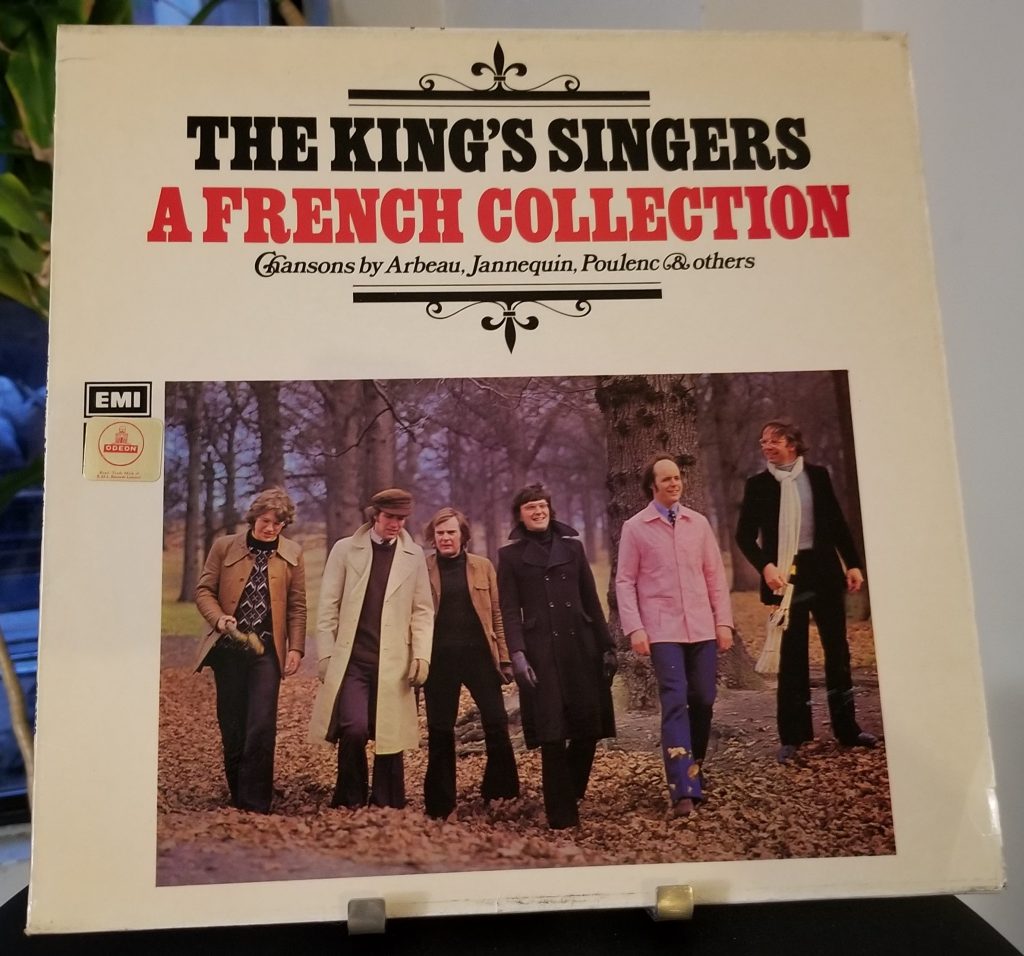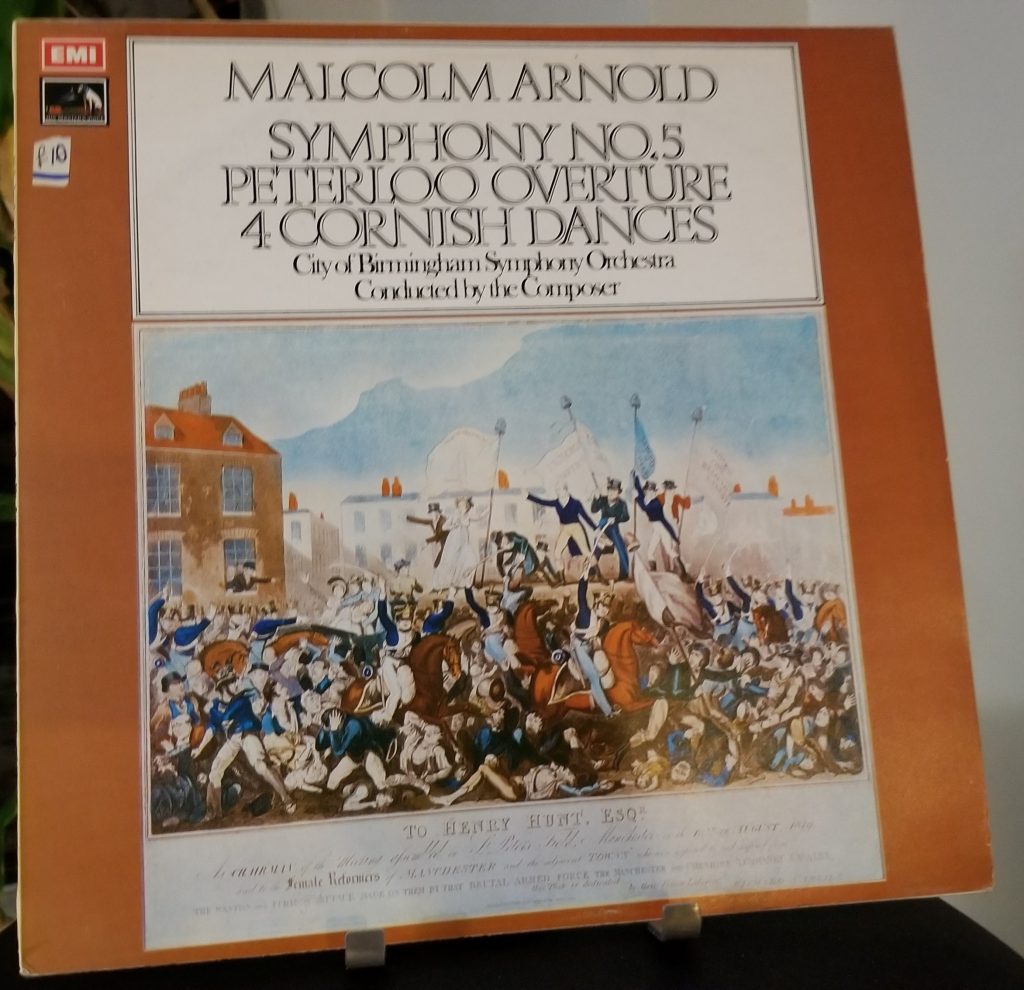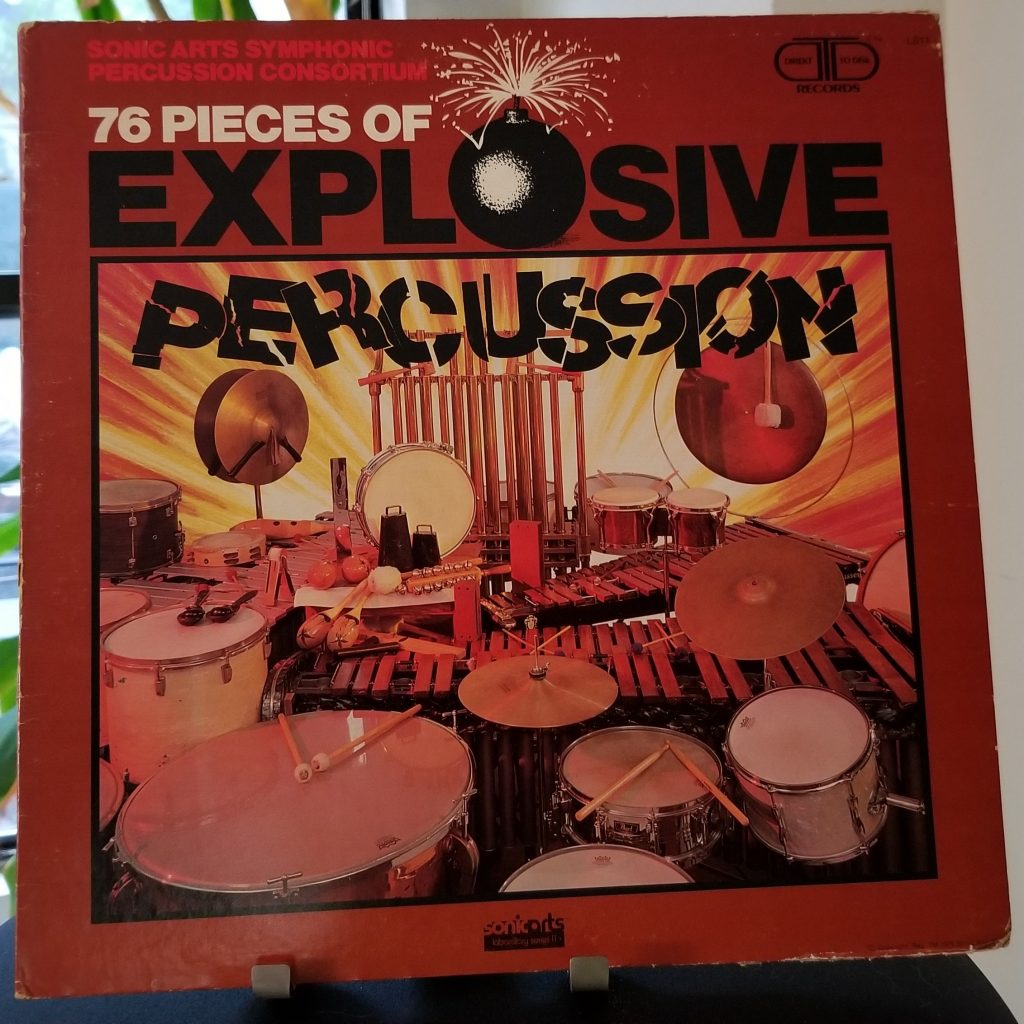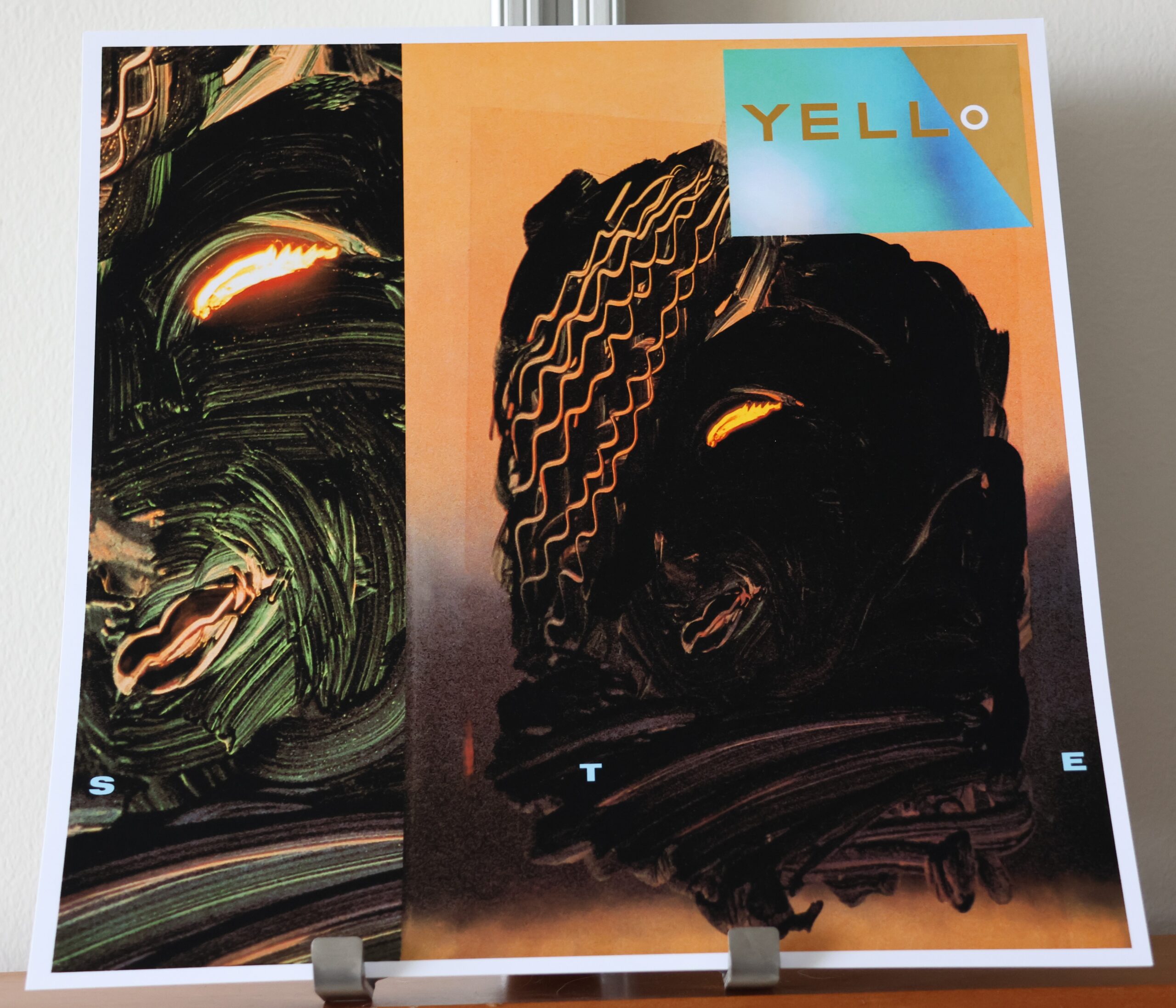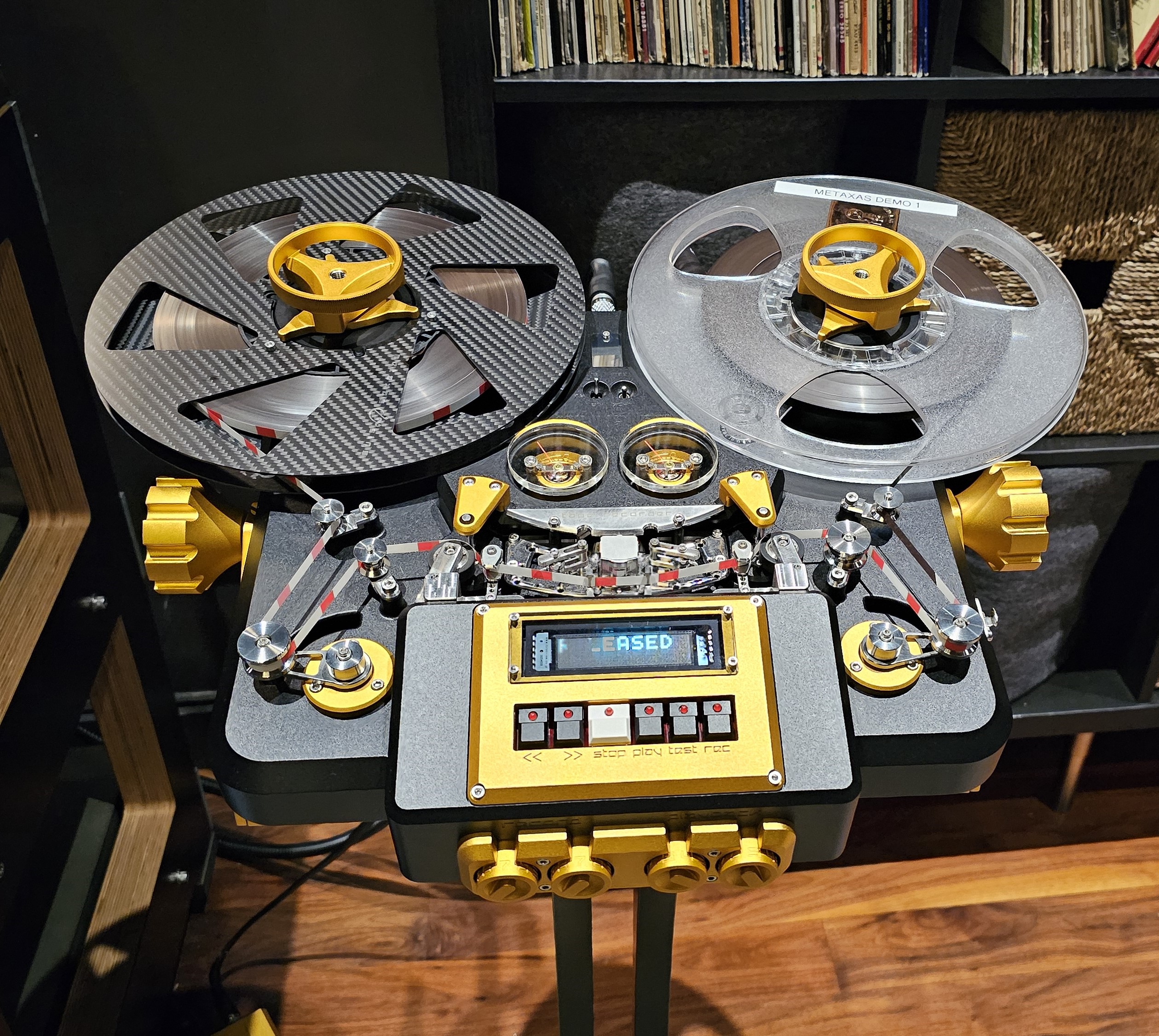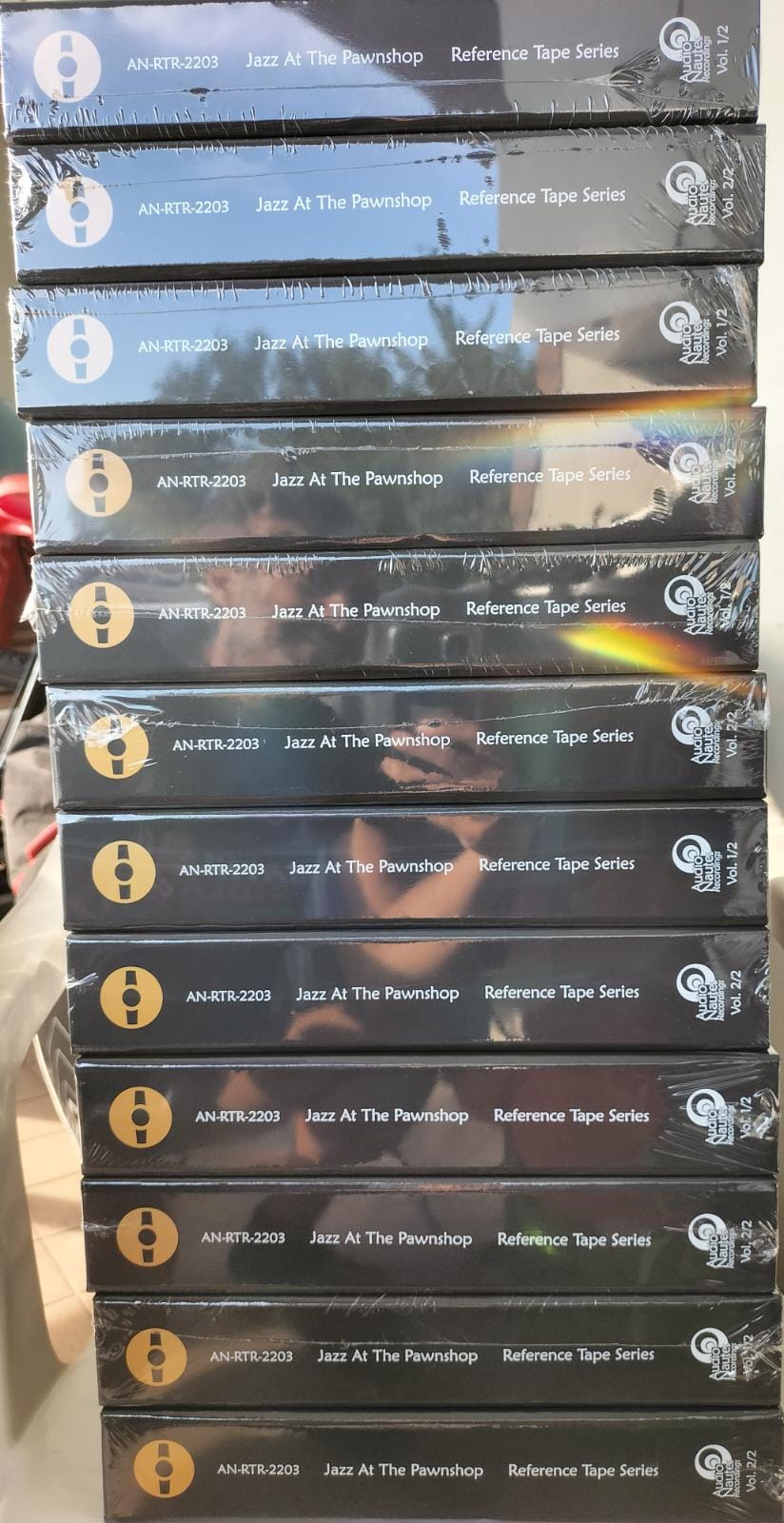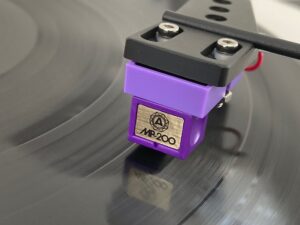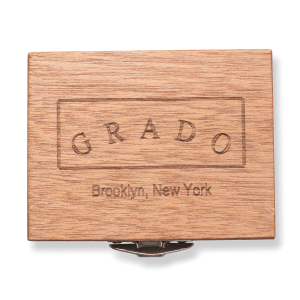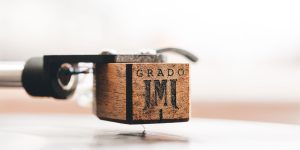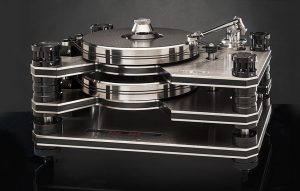Cartridges and jazz musicians share at least one thing in common. Ask five artists to play a song and each performer will give a slightly different interpretation. A little more swing. A little behind the beat. A little slower or faster tempo. Improvising differently. Cartridges (and for that matter arms and tables) are no different with each transducer revealing slightly different qualities of each recording. It's in the case of the Fuuga the cartridge's purity and linearity across the musical spectrum with a healthy sized side order of soundstaging that shrinks that barrier between recorded and live music.
No No-No?
This is the first installment of a two-part article. Part one (here) begins with a review of the Fuuga cartridge and concludes in Part 2 with a review of VPI's new Fatboy tonearm plus reference Lyra Atlas SL. Perhaps time permitting even a listen to A.J. van den Hul's newest Colibri Master Signature cartridge. Why a two-part, 24 type, leave you hanging in suspense review? Simple. The Fuuga's low compliance combined with its 15-gram weight wasn't a perfect fit for VPI's lower mass 12-inch, 3D dual-pivot arm. Changing two variables in a review is never optimal but there was no other option in this situation. Consequently, I opted to review the Fuuga using VPI's new but yet untested heavier mass, Fatboy tonearm. Divvying the review up allows for evaluating just how much of the "sound" was directly traceable to the Fuuga cartridge, Fatboy arm, or a combination of the two.
Luckily when embarking on this project Mat and Harry Weisfeld at VPI were busily working on a new, improved and slightly heavier mass version of their 3D printed arm. Of course, delivery of the new Fatboy arm—as with countless other high-end audio products—was delayed. Even after arrival, several "kinks"—primary among them the redesigned "tombstone" counterweight pivot (because some dealers didn't care for the look) and consequently loading the dual pivot—needed ironing out. No matter, the VPI Fatboy arm and Fuuga cartridge proved a terrific match.
Carrying Its Weight
Let's get this out of the way before proceeding any further. The Fuuga—despite starting out in designers Osamu Nagao and Tetsuya Sukehiro mind's as a reverse engineered Miyabi cartridge—is no Miyabi in at least one regard. (See my interview with Haruo Takeda taken from Ultimate Audio magazine regarding the construction of the original Miyabi cartridge at the end of this review.) Thank God for that! Mounting and aligning 47 Labs Miyabi cartridge with its the plastic body and untapped headshell in VPI's original 12-inch metal tonearm was an absolute nightmare! Even getting the VTA right was hellish because at some point the Miyabi's suspension "settled" necessitating raising the arm quite a bit. Two other differences? The Fuuga isn't as low a rider like the original Miyabi 47 Labs nor does it come with an attached stylus guard like the original Miyabi 47 Labs. In fact, the Fuuga like the previously reviewed van den Hul Colibri cartridges come sans stylus guard altogether.
The biggest issue with setting the Fuuga up in the VPI Fatboy tonearm proved to be loading the dual pivot because of the cartridge's weight and arm's new round counterweight. Don't be intimidated by the Fuuga's round body either. Aligning the cartridge seems daunting at first but there's plenty of cantilever to see for proper setup. Bear in mind, however, that the Fatboy arm isn't flat so it's best to first sight align the top of the cartridge's body so it's parallel to the LP with a commercially available cartridge alignment blocks like those offered by Acoustical Systems or Millenium. The height of the new Fatboy arm tube also necessitated dropping the VPI Vanquish table's arm board to achieve correct SRA. The Fuuga sounded great straight out of the box and didn't exhibit like so many other cartridges wild sonic swings during that 100 hour or so break-in period. Especially that period between 15 to 30 hour that often tests one's patience! VTF was set at 2.2 grams and loading in the range of 150 to 170 ohms with the Doshi V3.0 phonostage. Note that the Fuuga, like the Atlas/Atlas SL, is a groove digger and cleans even the most thoroughly cleaned LPs. And the cartridge's resolution is such you will hear that loss in purity caused by the tiniest bit of stylus schmootz.
Another topic worth addressing is the importance of phono cables in the cartridge review process. And when the dust settled there was one inescapable conclusion following auditioning the Fuuga with the likes of phono cables from Transparent Audio (Ref XL Gen. 5 in balanced mode), Lyra (Phonopipe), Audience (Au24 SX), and FM Acoustics (M cable). (Allowing for electrical circuits, cable break-in, cable settling, etc.). Phono cables are often far more colored than the cartridges being reviewed. For instance, the Transparent phono cables were open, neutral, extended and detailed. The Audience phonocables demonstrated a liquid midrange, visceral dimensionality and a huge soundstage. The sound of the FM Acoustics phono cables lay somewhere in between the two aforementioned cables replete with a beguiling tube-like midrange, low level resolution and that Kondo-like ability of transcending the recorded experience and allowing for a little more suspension of disbelief on recordings. Vocal and opera lovers should put the FM Acoustics cables on their must listen list.
Weighing In
The Fuuga's simply sucks you into the music with its purity and seductiveness. Where this sonic purity really makes its presence felt is in the midrange and especially with vocals. One album that I recently rediscovered while crate digging for LPs in my apartment (okay for the sake of transparency there's only one crate but many bookcases full of LPs) and really demonstrates the Fuuga's alluring midrange is The Kings Singers: A French Collection (EMI CSD 3740). The Fuuga reveals its superb midrange and ability to unravel the music's intricate harmonies and vocal color on this bit more closely miked than usual Kings Singer recording. Each singer sounds so natural without any artificiality or thinness. Now the Fuuga isn't perhaps the last word in resolution and harmonic overtones; that's, however, in comparison to the much more expensive vdh Colibri Signature Stradivarius cartridge. Add a half star here to the Fuuga's midrange performance with the recently arrived FM Acoustics phono cable ($2500 to 3000 depending on length). The FM Acoustics phono cable midrange quality really complements the Fuuga and brings out the decay of each singer's voice.
Another—albeit larger scale EMI recording of Malcolm Arnold conducting (with the City of Birmingham Symphony Orchestra) his Symphony #5 (EMI ASD 2878)—provides even more insight into the Fuuga's tonality and emotional connection to the music. This too recently unearthed LP of an uncharacteristic Arnold symphony with its dark, brooding and complex nature had sat on my shelves for too long. The Fuuga really stands out and shows its mettle by communicating the emotional somberness of the Fifth Symphony's second andante con moto movement. This aforementioned purity impacts both the instruments tone and the recording's transparency along with the clean rendering of massed strings and other orchestral instruments including the glockenspiel, harp, celesta, tom-tom, etc.
No less impressive is the Fuuga's ability to reproduce the recording's soundstage. The Fuuga's presents a soundstage as wide and deep with excellent image height (credit here must also go to the new VPI Fatboy arm, too) as any cartridge that has passed through the system. But that's not the entire story here. What separates the Fuuga from other moving coil transducers is how the transducer presents the performers on the soundstage. Other cartridges place the performers on the stage. The Fuuga, however, takes the instruments to another level and organizes them into a coherent musical group or unified orchestra.
Couple that with the Fuuga's transparency and that disbelief barrier between real and recorded shows some cracks. Transparency here isn't so much the ability to view in the "minds eye" the deepest nooks and crannies of the soundstage (that the Fuuga does quite well) but to actually gaze upon the stage. It's as if the Fuuga's designers Windexed that pane of glass through which we view the instruments. As a result, there less of a feeling of a barrier between you and the music and the system disappears into the background.
"Yulanga" from Dead Can Dance's Into The Labyrinth (Mobile Fidelity 2-001) replete with its kaleidoscopic imaging and instruments popping up out of nowhere serves quite nicely to illustrate this point. Everything just sounds a little more intimate. The soundstage may be touch more forward than say the Lyra Atlas or vdh Colibri, but that doesn't affect soundstage depth. Drums are solidly anchored and rhythms clearly rendered. The Fuuga also doesn't have as much of that trade-off between image dimensionality and body and the reproduction of the soundspace as some other cartridges. In other words, reduce the sense of the ambiance and instruments pop out. Conversely, increase the sense of ambiance and instruments lose a bit of their palplability. Not here. The Fuuga, as with the best cartridges out there, balances both image viscerality and hall spaciousness.
Lastly, the Fuuga's macrodynamics really caught me by surprise when spinning either Pulse: Music for Strings and Percussion (New World Records NW 316) or 76 Pieces of Explosive Percussion (Sonic Arts LS-11). Here, the all drum last track from Explosive Percussion literally lives up to its name. The drums on "4/4 for Four" on side 2 will make you literally jump and have you running for the volume control hoping you haven't blown out a driver in the process. Some listeners might think on Pulse: Music for Strings and Percussion that upper octaves are a little softened. Not so. It's just that we've become too accustomed to mastering engineers goosing up the upper octaves in an effort to give the impression of more detail on the recording. Not to get ahead of myself but the Fuuga mounted in the new and recently arriced SAT LM-12 tonearm has a rare ability to extend dimensionality from the midrange into the upper octaves.
A Unanimous Decision
The new Fuuga (Elegance with flair) and long discontinued Miyabi (Elegance) 47Labs cartridges share some traits in common. Both cartridges excelled when it comes/came to the midrange and macrodynamics. (Still the Fuuga is in another league when it comes even where they excel.) But that's where the similarities end. The Fuuga is in another league, however, when it comes to capturing the initial transient attack of instruments, resolving the last bit of low level detail on the recording and producing a crystal clear picture into the soundstage.
Just as with musicians, the Fuuga, Atlas SL and Colibri cartridges bring different strengths to the table. No, the Fuuga doesn't quite have the Atlas SL's start and stop on a dime speed and delineation or incisiveness, grip or texture in the bass on the "Round About Midnight" cut from the Jeton direct-to-disc Moonlight Serenade (Jeton 100 3315). Nor does it have the van den hul Colibri Signature Stradivarius's extraordinary low level resolution and spatial recreation or the ability to capture all of the harmonic envelope surrounding Almeida's guitar. What the Fuuga brings to the table, however, is a certain beauty and overall balance characterized by its neutrality, purity, explosive dynamics and a jaw dropping soundstage. This purity is most likely in part directly traceable to the constrained layer damping employed in the Fuuga's body utilizing three types of Aluminum and serves as an energy path. The Fuuga will reveal issues—take the highs and lows of some early Contemporary LPs—but never to the point of annoyance or slamming you with the recording's flaws. Conversely, throw the best recorded albums on and just sit back and let the music come to you. The Fuuga is a midrange lover's dream come true and definitely a cartridge to put atop the must-listen list between $5000 and $10K.
And isn't that the ultimate goal of this hobby? To listen to and enjoy the music? The equipment is just a means to get to the final destination?
To be continued in Part 2.
Fuuga Cartridge Moving Coil Cartridge
Retail: $8975
Specifications
- Cartridge type: Moving coil
- Output: 0.35 mV (5 cm/s zero to peak, 45°)
- Recommended tracking force: 2 to 2.2 g
- Internal Impedance: 2.5 Ω (1 kHz)
- Compliance: 7 cu (100 Hz)
- Body: Tri-layer consisting of different thickness Aluminum 7075 (top)/ Aluminum 2017 (middle)/Aluminum 6065 (bottom)
- Cantilever: Tapered, A2017 Aluminum alloy
- Stylus: 8 x 40 µm pure diamond, parabolic hybrid
- Weight: 15 g
North American distributor
Audio Arts
Gideon Schwartz
212.260.2939
Cartridge designers
Osamu Nagao and Tetsuya Sukehiro
Insights Into the Fuuga Sound
North American Fuuga distributor Gideon Schwartz's infatuation with Miyabi cartridges—"one of the first full monolithic metal cartridges of the day," he recalls—traces back some 20 plus years ago to the Haruo Takeda designed Cello Chorale Cartridge. The Chorale with its, "immediate and fast yet never exaggerated presentation," left an indelible mark on Gideon. "It [the Cello] had," he continued, "a balance, linearity and beauty that other cartridges of the day didn't."
Moving to the Takeda and Miyabi era. Takeda's new Alnico magnet based design was according to Gideon, "a little slower, rounded and fleshed out." But these came at a cost. The Miyabi lacked according to Schwartz, "the spatial qualities, speed, linearity and balance of the Chorale."
Jump ahead roughly two decades to 2014. Schwartz heard from friend and then 47 Labs importer Yoshi Segoshi about this new Fuuga cartridge from Japan. Gideon arranged for a sample to be sent to his store AudioArts located in the legendary and historic Flat Iron District of Manhattan and had it installed in his Brinkmann and Sperling tables. Despite being in different tables and arms, "the Fuuga always had a consistent sound centered around the midrange. The Fuuga sounded like the Cello Chorale cartridge but better. The Chorale was too fast and tightly wound while the new Fuuga is more open and all about balance."
The History Behind the Original Miyabi Cartridges: Conversation With Miyabi Designer Haruo Takeda (originally appearing Ultimate Audio, Vol. 3, No. 4, 1998)
MBA: Why have these wonderful cartridges been absent for so long from American shores?
HT: The exporter wasn't active for some time.
MBA: In a nutshell, what are the differences between the latest and older Miyabi cartridges.
HT: The new models have the ability to extract more information from the groove and the sound is also more stable. Many cartridges, even today's models, may sound good at the beginning but lose their dynamic capability after a while. I don't think many people are aware of this and it never happens to my models.
MBA: Design-wise, what are the differences between the 47 labs and the "standard" version of the Miyabi cartridge? How do the differences in design relate to the cartridge's sound?
HT: They employ different materials and structures. With 47 Labs version, I used a plastic body [The standard Miyabi uses Al.—MBA] with a lower Q and semi-open structure. I think they both contribute to the dynamic sound of 47 version.
MBA: Why does the cartridge weigh 13 g?
HT: It's because I use Alnico magnet—which is denser than other types of magnets. This larger mass also helps to reduce unnecessary resonance.
MBA: It's interesting that you chose to use an Al cantilever. This flies in the face of today's trend towards stiffer, less resonant and more exotic materials. What led you choose an Al cantilever?
HT: Aluminum has lower Q and is softer than many other materials used for cantilevers today. This serves to eliminate extra resonance.
MBA: When viewing the cantilever from the side, one can't help noticing that it is curved instead of straight. How does that affect the sound and VTA.
HT: The angle at the tip of cantilever helps to stabilize the centering of the stylus and that results in better high frequency separation.
MBA: What are the new and innovation design aspects of the Miyabi 47 Labs and what is the relationship to the sound?
HT: I can give you a lot of crap here if I wanted to. What I'm actually doing is a very patient, step-by-step experiment and tuning it into a product. So for me, there's no dramatic innovation, but the plastic body, the semi-open structure, the aluminum cantilever etc., all help the cartridge recover as much information as possible from the LP—and maintain that performance for quite a long time.
MBA: Other than being a line trace stylus, are there any other reasons for the Miyabi being so VTA sensitive?
HT: It is less sensitive if the cantilever is long, but to realize the sound quality I wanted, I had to shorten the cantilever as much as possible. I started the experiment with a cantilever length of 8 mm—and tried more than 10 variations. What Miyabi/47 has is the best performance without losing its practicality.






